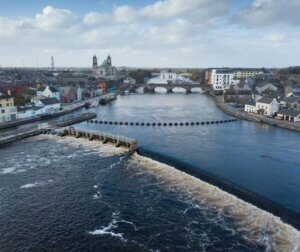County Carlow might be one of Ireland’s smaller counties, but that doesn’t mean it falls short on providing visitors with lots to see and do, including an array of historic attractions that dot the countryside and provide the perfect introduction to this county’s ancient past.
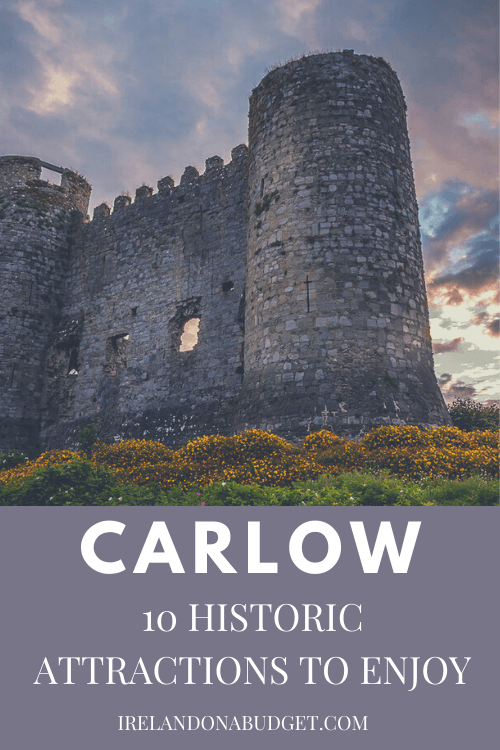 This post and page contain affiliate links and I may earn compensation when you click on the links at no additional cost to you.
This post and page contain affiliate links and I may earn compensation when you click on the links at no additional cost to you.
Carlow is a short drive from Dublin. The total distance is approximately 52 miles (84 km), with a driving time of about 1 hour and 9 minutes.
Ballyloughan Castle
While a gate blocks visitors from getting up close to this beauty of a 13th-century castle ruin that is located in rural County Carlow (not far from Bagenalstown), there’s a chance you might be able to wander around it if you ask for permission from the nearby landowners.
Imagine what life might have been like at Ballyloughan Castle in its open courtyard that could have been used by workers or as a place for the owners of the castle to gather, even keep small animals.
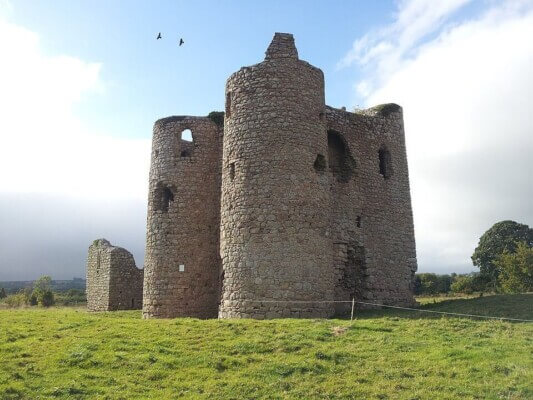
A twin-towered gatehouse, the hall, and the foundations of one of the corner towers remain today.
The castle is now a National Monument.
Ballymoon Castle
Among the castles and historic monuments in County Carlow, Ballymoon Castle has one of the most mysterious backstories, as retold by Finn Dwyer of the Irish History Podcast.
It appears that Ballymoon Castle was never completed. In fact, it was abandoned halfway through construction.
Judging by the architectural features of the remains, historians believe that the castle was built around 1300.
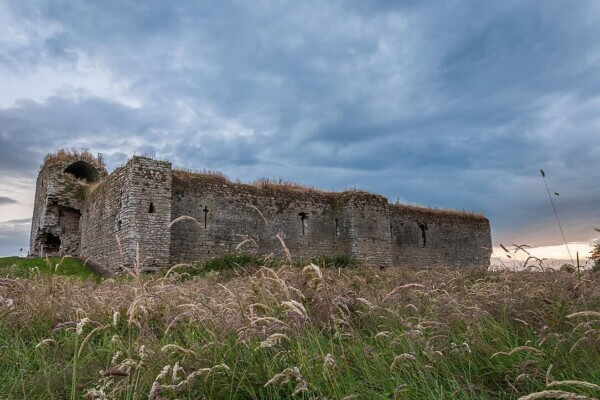
While there’s no sure way to know who exactly began building Ballymoon Castle, the lawlessness that existed between the Gaelic Irish and the Anglo-Normans in the area and indeed in many other parts of Ireland during the 14th century may have contributed to the stoppage.
You can easily walk up to the castle and explore its ruins, which includes a courtyard about 80 square feet surrounded by granite walls.
You can still see the fireplaces and the area where the doors would have been, as well as evidence of a great hall.
Black Castle (Leighlinbridge Tower House)
Located in the village of Leighlinbridge on the River Barrow, the early version of this County Carlow castle was built around 1181 by the Norman knight Hugh de Lacy, who governed Ireland during the reign of King Henry II.
It is one of the earliest Norman fortresses in Ireland.
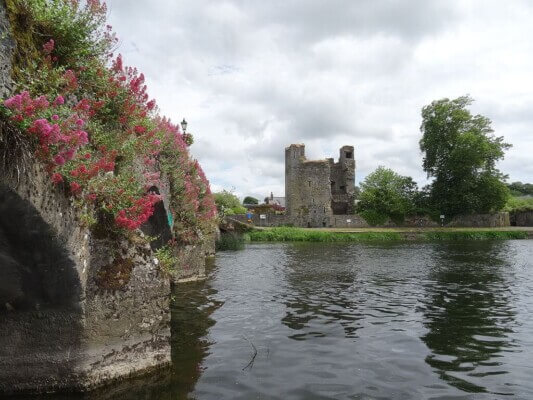
At one time, it was owned by the powerful Butler family (of Kilkenny Castle).
During the 16th century, the castle under the ownership of George Carew, the President of Munster, was attacked by the Gaelic Lord of Laois Rory Oge O’More.
Carew escaped the attack albeit through a hail of daggers.
The castle would remain the property of the Crown thereafter. It was destroyed by Cromwell’s army in 1650 during the period known as the Irish Confederate Wars.
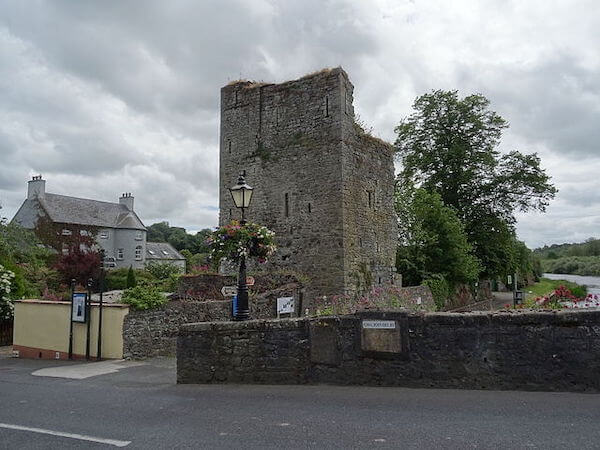
A 50-foot (15-meter) high tower and partial bawn are all that remains of the structure today.
When you visit, be sure to take note of the nearby Valerian stone bridge that is believed to be the oldest functioning bridge in Europe (constructed in 1320).
Carlow Castle
Carlow Castle stands on the eastern bank of the River Barrow and is believed to have been built by William de Marshall, the Earl of Pembroke and Lord of Leinster between the years 1207 and 1213.
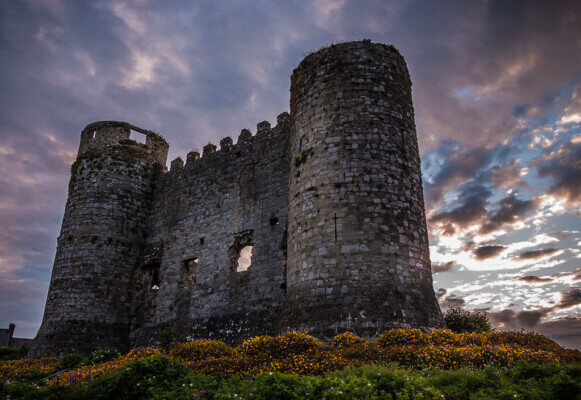
It was the first of its kind in Ireland because of the construction of its tower keep, the fortified area of the structure.
Like so many other castles across Ireland, this one, too, was handed over to the Crown in 1306, becoming the property of Thomas Plantagenet.
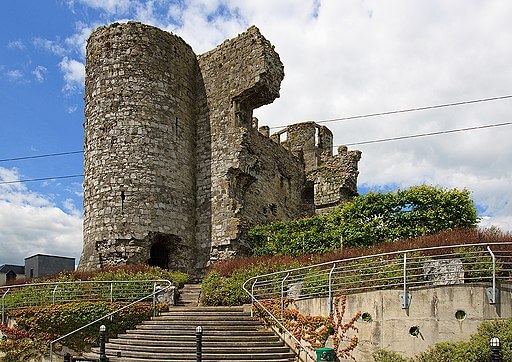
It changed hands several times before it was taken by Oliver Cromwell but was later given back to the Earl of Thomond.
In 1814, a local physician attempted to destroy the interior of it so he could construct a lunatic asylum in its place.
The attempt obviously failed and today all that remains of the castle is the outer face of the west wall and two towers.
Brownshill Dolmen
This huge megalithic monument located about 5 km (3 miles) east of Carlow town is the largest and heaviest in Europe.
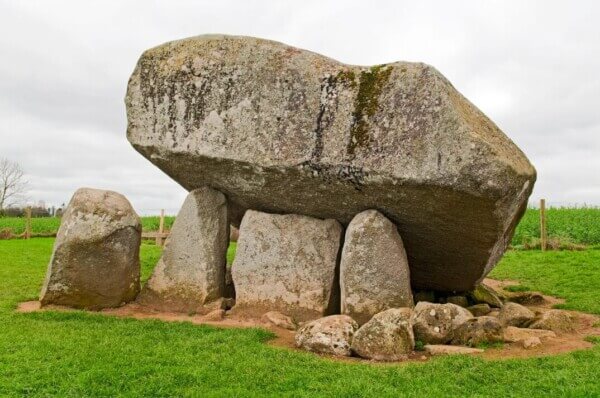
Listed as a National Monument, it is made up of two portal stones and a gate stone that supports a massive 150-ton granite capstone.
It is believed to have been built between 4,000 and 3,000 B.C., with some saying it served as the tomb of a local chieftain and was possibly the site where human sacrifices took place.
Duckett’s Grove
No visit to County Carlow is complete without visiting the iconic Duckett’s Grove.
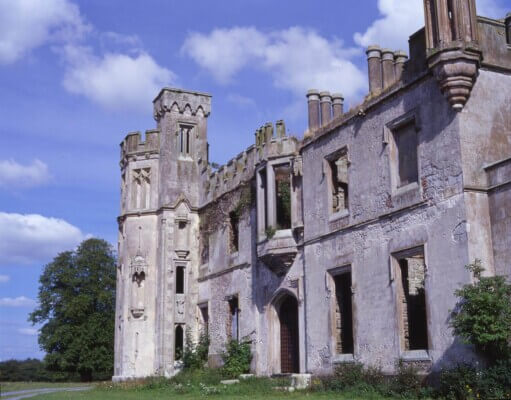
This Gothic Revival-style ruin was once the home of the Duckett family, who were at one time the largest landowners in all of County Carlow.
Built between 1815 and 1850, the derelict house, complete with towers and turrets, has attracted paranormal seekers for years.
In 2011, it was featured on Syfy’s “Destination Truth,” a weekly paranormal reality TV series.
The house was destroyed by fire in 1933.
In 2005, Carlow County Council took ownership of the grand ruin and began renovating the grounds, which includes two beautiful Georgian walled gardens.
The gardens contain a variety of plants and flowers, including shrub roses, a collection of Chinese and Japanese peonies, azaleas, rhododendrons, and more.
There are also figs and a historical variety of Irish apples.
Free guided tours will give you the history of the house and of the Duckett family, who arrived in the area around 1695.
The estate is open year-round and is free to explore.
St. Laserian’s Cathedral
This Church of Ireland cathedral is one of the smallest in Ireland, but despite that, it has a formidable history.
Located on the site of a 7th-century monastery in the village of Old Leighlin (about 12 km/7 miles from Carlow town), which was home to 1,500 monks at its peak, the church you see today was built in the 12th century and has some amazing features from the past.
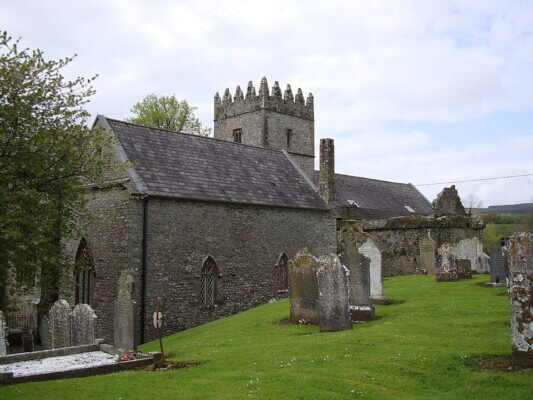
It is named after Saint Laserian, also known as Saint Molaise of Leighlin, who was an abbot at the monastery and possibly its bishop.
He is credited with introducing the Roman method of dating the Easter celebration in Ireland.
Over the centuries, the cathedral was greatly modified by the addition of a central tower, a chapel north of the chancel, and the rebuilding of the chancel walls.
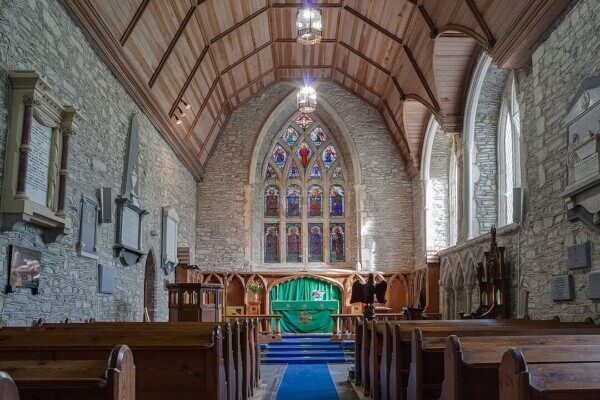
A visit to this beautiful place, the subject of several Viking raids, is worth it if only to examine the massive central tower with its intricately ribbed vault and unique features.
Other items of interest include a stone seat with trefoiled heads and an 11th-century baptismal font, the oldest artifact in the church.
Rathgall Hillfort
While Newgrange and other ancient forts are popular attractions for international tourists and indeed are well known to many, Ireland has other ancient forts that are not as familiar.
The Rathgall Hillfort located about 5 km (3 miles) from the town of Tullow, is one of them.
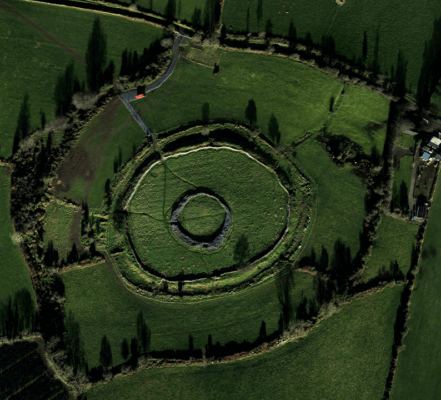
Experts believe it dates from the Late Bronze Age/early Iron Age.
Research on the site has also determined that the site was the first Later Bronze Age Workshop in all of Ireland, with large quantities of bronze weapons and tools found there.
An important family is said to have lived on the site’s hilltop.
The fort is located on the Carlow/Wicklow border.
Get Wifi in Ireland with Wifi Candy – take 10% off with code irelandonabudget
Carlow Military Museum
Located in Carlow town, this interesting museum covers the county’s military history, including the involvement of its residents in the Irish War of Independence and the Irish Civil War, both occurring at the beginning of the 20th century.

Exhibitions also show the involvement of Irish soldiers in United Nations peacekeeping missions in the Congo, Lebanon, and Somalia.
You’ll see a full-scale replica of a World War I trench in the museum, as well as many of the uniforms used by Ireland’s military, beginning with the foundation of the state to the present day.
Over 500 men from Carlow were killed during the Great War. Approximately 2,000 were injured.
There is also a display detailing the county’s involvement in the Irish Rebellion of 1798.
An original Brown Bess musket, a British-made and widely used gun, is part of the collection.
The Cloch-a-Phoill Pillar Stone
Like many ancient antiquities in Ireland, this one also has some folklore connected to it.
The Cloch-a-Phoill (pronounced “Clock-a-Fill”) pillar stone located near Tullow has a circular hole pierced into it.
Archaeologists believe that the 30 centimeter-wide (11 inches) stone was used as a seal or blocking stone for a megalithic tomb and that the hole may have been used to pass food to the dead once the tomb was closed.
In the late 18th century, sick children were passed through the hole in the hopes of a cure.
Niall of the Nine Hostages, a High King of Ireland, is also associated with this ancient monument.
Have you visited any of County Carlow's historic attractions, mentioned above? If so, let me know in the comments below.

